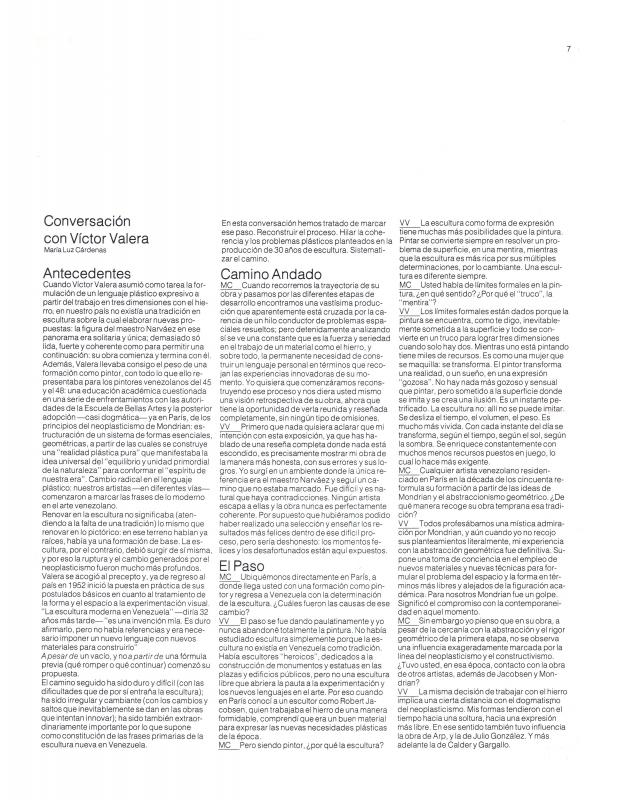As curator of an exhibition on Venezuelan artist Víctor Valera (b. 1927), Papeles Perforados, Juan Carlos López Quintero undertakes a complete and detailed study of the creation of the “papeles” [papers]; a specific and limited part of Valera’s work. He discovers similarities between him and Jesús Soto, given that both found inspiration in music. The author coins the term “pintar la música” [paint the music] to describe Valera’s aesthetic intention, who is an artist who continuously reinterprets himself and his work. López Quintero’s work is exceptional: he examines the origins of Valera’s work in order to understand his two dimensional proposal; he delves into his influences in order to describe the most immediate antecedents of the “papeles.” He discovers the causes and reasons for this new series—which is unconnected to Valera’s traditional sculptural work—and he finds parallels between those “papeles” and his pictorial and sculptural work. He describes in detail his visual, aesthetic, and material characteristics (use of color, oval shapes, and variations in his lines). He understands the “papeles” as the evolution of more than twenty years of work. For López Quintero, the classic precepts of geometric-abstraction, which have influenced Valera’s sculpture, were surpassed in the “papeles,” even to the point of negation. These works do not correspond to any art trend, and they arise from the desire to return to painting, although from a new perspective. In effect, the “Papeles Perforados” are the best proof of the recuperation of the two-dimensionality in painting. Given their tactile nature, they retain a sculptural element. [The author’s] conclusion is that the “papeles” are an intimate and personal exercise that do not require outside influences for their creation, unlike great sculptural works.
[See “Conversación con Víctor Valera” [Conversation with Víctor Valera] conducted by María Luz Cárdenas [ICAA digital archive doc. no. 1161748].

